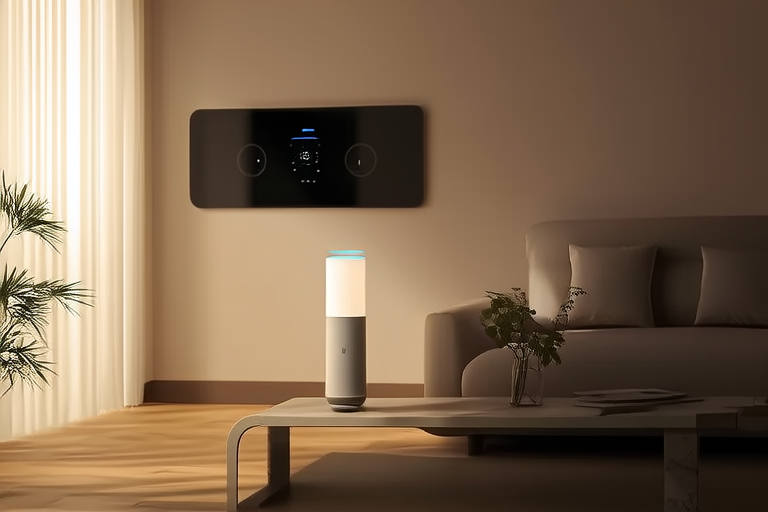“`html
Maximizing Convenience: Top Trends in Modern Smart Homes
Introduction
The concept of smart homes has evolved dramatically over the past decade, transforming the way we live, work, and interact with our surroundings. Once the domain of science fiction, smart homes are now a reality, offering unparalleled convenience and efficiency through the integration of advanced technology. From automated lighting and climate control to sophisticated security systems and health-monitoring devices, smart homes are designed to make daily life easier and more comfortable.
Advancements in technology have paved the way for these innovations, enabling homeowners to manage their environments with ease. The primary goal of a smart home is to enhance convenience and efficiency, ensuring that every aspect of daily life is optimized for comfort and functionality. As technology continues to evolve, so too does the potential for smarter, more connected living spaces.
Automation and Control Systems
At the heart of any smart home lies its automation and control systems, which allow users to manage various aspects of their environment with minimal effort. These systems can be controlled via voice assistants, mobile apps, or even physical controls, making it easy to operate lights, thermostats, and other devices from anywhere in the house.
Voice assistants like Amazon’s Alexa, Google Assistant, and Apple’s Siri have become increasingly popular for controlling smart home devices. These assistants can be integrated with multiple systems, allowing users to issue commands for everything from adjusting the thermostat to locking the doors. Mobile apps provide another layer of control, enabling users to monitor and manage their home remotely via their smartphones.
The true power of smart home automation lies in its ability to integrate different devices and systems. For example, a smart thermostat can be programmed to adjust temperatures based on occupancy patterns, while smart lighting systems can automatically turn off when rooms are unoccupied. This level of integration ensures that all components of the smart home work together seamlessly, enhancing both convenience and energy efficiency.
Energy Efficiency and Sustainability
One of the most significant benefits of smart homes is their contribution to energy conservation and sustainability. By optimizing the use of electricity, water, and other resources, smart homes help reduce environmental impact while lowering utility bills.
Smart thermostats, for instance, learn your temperature preferences and adjust accordingly, ensuring that heating and cooling systems are used only when necessary. Similarly, smart lighting systems can be programmed to turn off when rooms are unoccupied, preventing unnecessary energy waste. Other energy-efficient appliances, such as refrigerators, dishwashers, and washing machines, can also be integrated into the smart home ecosystem, further reducing energy consumption.
In addition to traditional energy-saving measures, many smart homes now incorporate renewable energy sources like solar panels. These panels can generate electricity from sunlight, reducing reliance on non-renewable energy sources and lowering carbon footprints. Some smart home systems even allow homeowners to monitor their energy usage in real-time, providing insights into areas where further improvements can be made.
Security and Surveillance
Home security has always been a top priority for homeowners, and modern smart homes offer a range of advanced security features to protect against intruders and other threats. From smart locks to cameras and motion sensors, these technologies provide enhanced peace of mind for residents.
Smart locks, for example, allow homeowners to control access to their property remotely, either by issuing temporary access codes or granting permanent access to trusted individuals. Many smart locks can also be integrated with voice assistants, making it easy to lock or unlock doors with a simple command. In addition to physical access control, smart cameras and motion sensors provide real-time surveillance, alerting homeowners to any suspicious activity.
Data privacy and cybersecurity are critical considerations in any smart home system. With so much personal information being collected and stored, it’s essential to ensure that this data is protected from unauthorized access. Many smart home devices come equipped with encryption and other security features to safeguard user data. Homeowners should also take steps to secure their networks, such as using strong passwords and enabling two-factor authentication.
Health and Wellness Features
Smart homes are increasingly focused on promoting health and wellness, offering a range of technologies that support physical and mental well-being. From air quality monitors to sleep trackers, these devices help users maintain optimal health conditions within their living spaces.
Air quality monitors, for example, can detect pollutants and allergens in the air, providing real-time alerts when levels exceed safe thresholds. These devices can also be integrated with HVAC systems to automatically adjust ventilation and filtration settings, ensuring clean, healthy air throughout the home. Sleep trackers, meanwhile, monitor sleep patterns and provide insights into factors that may be affecting restfulness, helping users improve their sleep quality.
Advancements in medical monitoring and emergency response systems are also transforming the smart home landscape. Devices that track vital signs, such as blood pressure and heart rate, can provide early warnings of potential health issues, allowing for timely intervention. Emergency response systems, such as fall detectors and medical alert buttons, can quickly summon assistance in case of accidents or medical emergencies, providing peace of mind for both residents and their loved ones.
Entertainment and Connectivity
Smart homes are not just about practicality; they also offer enhanced entertainment experiences through advanced audiovisual systems and seamless connectivity options. Smart TVs, sound systems, and media hubs are just a few examples of how smart home technology can elevate entertainment.
Smart TVs, for instance, offer a wide range of streaming services, allowing users to access their favorite shows, movies, and games with ease. These TVs can also be integrated with voice assistants, enabling hands-free control of playback and other functions. Similarly, smart sound systems can be programmed to play music or provide surround sound for movies, creating an immersive audio experience.
Seamless connectivity is another key feature of modern smart homes, allowing users to stream content from one device to another without interruption. Cloud-based services enable users to access their media libraries from anywhere, while multiroom audio systems allow for synchronized playback across different rooms. These features ensure that entertainment is always available and easily accessible, no matter where you are in the home.
Conclusion
As we’ve explored in this article, smart homes offer a wealth of features and benefits that enhance convenience, efficiency, and overall quality of life. From automation and control systems to energy efficiency, security, health and wellness, and entertainment, these technologies work together to create a smarter, more connected living space.
The impact of these trends extends far beyond mere convenience, however. By promoting sustainability, enhancing security, and supporting health and wellness, smart homes have the potential to significantly improve daily life for homeowners. As technology continues to advance, the possibilities for smarter, more efficient living spaces will only continue to grow.
Looking ahead, the future of smart homes holds exciting possibilities. From artificial intelligence-powered personal assistants to fully autonomous homes, the next generation of smart home technology promises to be even more intuitive and responsive. Whether you’re a tech enthusiast or simply looking to improve your daily routine, there’s never been a better time to explore the world of smart homes.
“`


